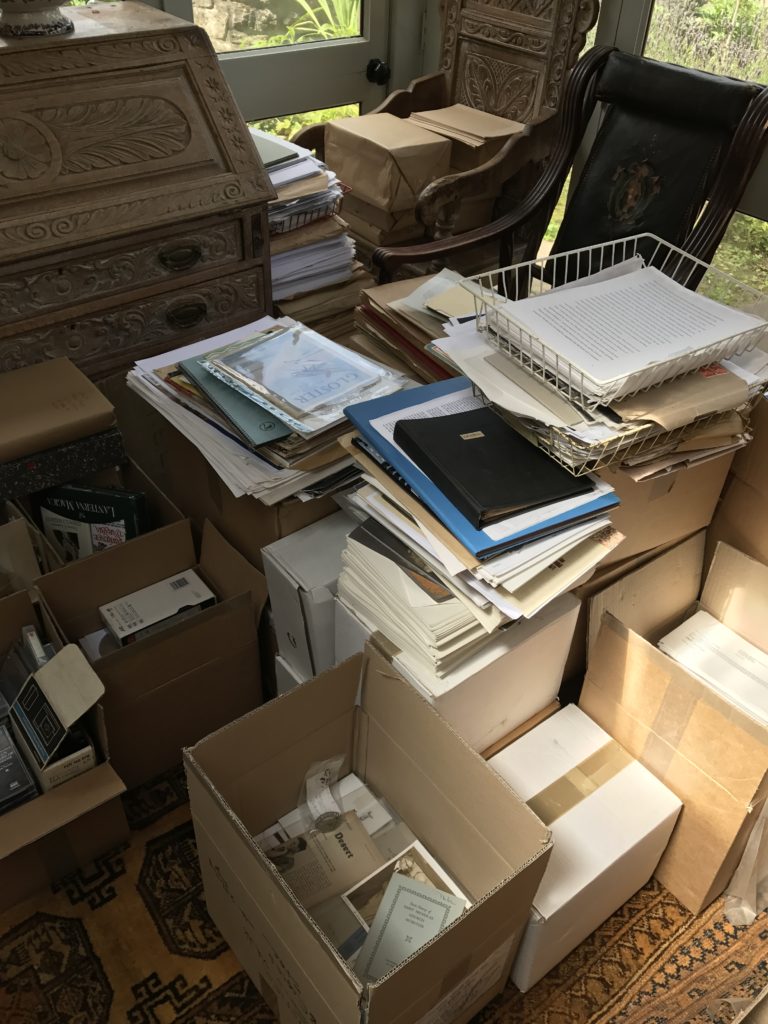


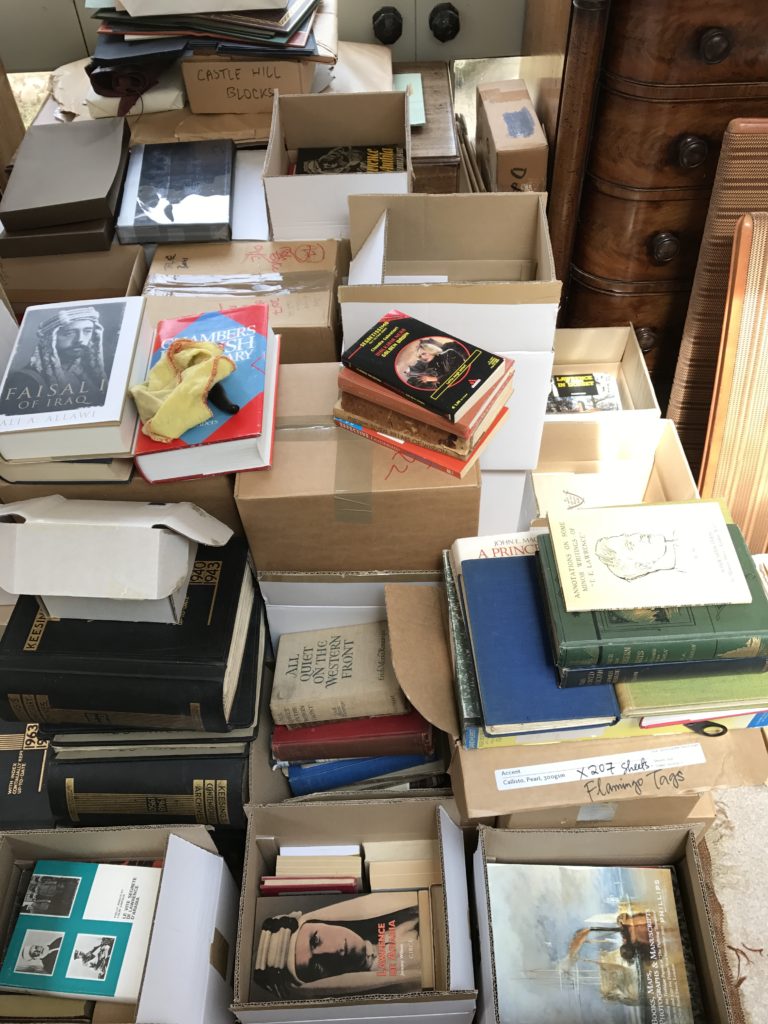
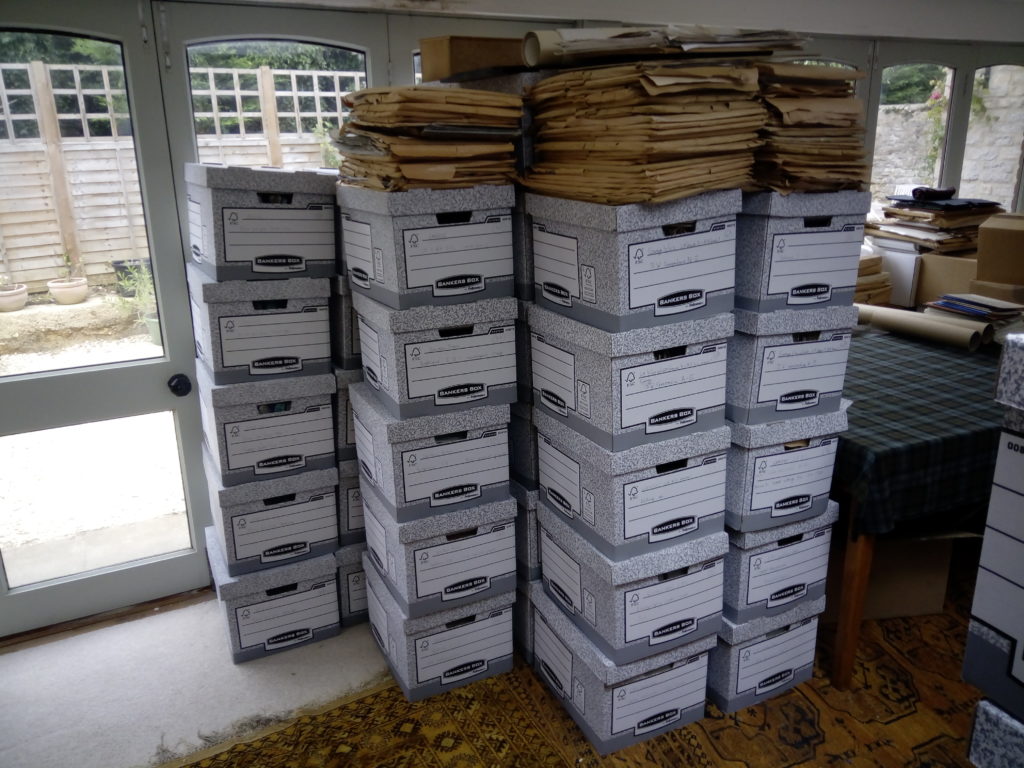
27 March 2023 | Lucy Smith
In this blog, I usually focus on the stories surrounding the materials that I find in the Wilson collection. However, many people won’t know what it is that we actually do with our collections as archivists, so I’m going to give a little insight into the processes involved in cataloguing the Wilson papers.
1) Get your collection!
In this case, the Wilson papers came to us from the writer’s former study in Oxfordshire. Former College Archivist, Dr Charlotte Berry, went there to see the collection packed up and ready to go. Every box was labelled with its original location in the office, so that a semblance of the original order of the collections could be preserved – this is an important concept for archives, as it preserves the original meaning and use of the papers.




2) What’s in it?
Before cataloguing can begin, archivists will often carry out an initial box list to ascertain the basic contents and extent of the collection on accession. This was done by Charlotte before I started at Magdalen. The collection then consisted of 77 boxes of material with additional outsize material. Since then we have received approximately 30 more boxes of material… That’s not to mention the digital collections!
3) Who’s going to deal with all this stuff?
For large collections such as the Wilson papers, archival institutions will often hire a Project Archivist to concentrate on cataloguing a single collection, rather than having to balance this with enquiries, visitors and collections from across seven centuries of College history! In this instance, the college received invaluable support from the Harry & Alice Stillman Foundation, which generously provided funding both for my post and for associated activities.
4) Unexpected Challenges
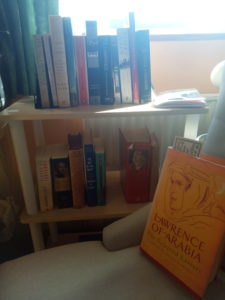 As was the case with everyone during the Covid-19 pandemic, lockdown somewhat obstructed normal working life! I was starting a new job but suddenly found I had to work from home in Wales for the first four months. This meant that I started working on Wilson’s digital collections first. This was a somewhat unorthodox beginning, but it did allow me to get to grips with the basic contents of the collection from afar. I also did a lot of background reading on Lawrence, and set up a little bookcase in the spare room on my new specialist subject!
As was the case with everyone during the Covid-19 pandemic, lockdown somewhat obstructed normal working life! I was starting a new job but suddenly found I had to work from home in Wales for the first four months. This meant that I started working on Wilson’s digital collections first. This was a somewhat unorthodox beginning, but it did allow me to get to grips with the basic contents of the collection from afar. I also did a lot of background reading on Lawrence, and set up a little bookcase in the spare room on my new specialist subject!
5) How does all this fit together?
After I was able to start at Magdalen in person in August 2020, I started to look at the collection and work out how it was put together so I could reflect it in the order of my catalogue. This is perhaps the most important part of cataloguing and is a process that, for the Wilson papers, could really only be done by getting to grips with the nitty-gritty of the collection. Although some material was in clearly ordered series, such as Wilson’s facsimile diaries and biographical files, there were plenty of boxes which were labelled “misc.” in the box list and which consisted of a jumble of random material from across the collection.
For example, one box contained such assorted material as a letter of appreciation about Wilson’s biography from Prisoner actor Patrick McGoohan (1928-2009); copies of an auction catalogue about the sale of T.E. Lawrence’s Doves Press Bible in 1979; a letter that Sir Hugh Boustead (1895-1980), diplomat and winner of the Lawrence of Arabia Memorial Medal, sent from Saudi Arabia in 1955 to a friend called “Ted”; two obituaries for A.W. Lawrence (1900-1991); and a T.E. Lawrence Society commemorative bookmark, among many, many other things…
Even though large swathes of the Wilson collection were what can be called miscellaneous in the extreme, I soon found that they had a kind of invisible internal logic that acted as a guide to putting them in order. Some documents were labelled in pencil with instructions such as “f. Cape”, for Jonathan Cape papers, or “f. Sales catalogues”, for papers relating to auctions. Others clearly fell into a consistent group, such as facsimiles of Lawrence’s books or material about a specific project of Wilson’s, and still more material could be easily slotted in to existing areas of the collection, such as newspaper clippings. Several times, I found half of a long document somewhere and the other half in a completely different location and was able to re-unite them.
For this reason, even though I re-organised the collection from the state in which I found it, I do feel I have a sense of returning it to the intended order of the original working process. Of course, this can never be completely accurate and acts as an approximation of original order, but I believe it is true to the spirit of the collection.
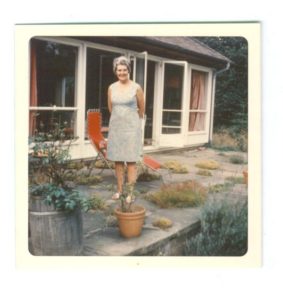
Photograph, probably showing Arabella Rivington, Lawrence researcher, c. 1960s. Magdalen College Archives, Papers of Jeremy Wilson, P450/R/IAV.
6) Whose collection is it anyway?
We would usually presume that a personal collection, such as the Papers of Jeremy Wilson, is chiefly the result of one person’s work and has an internal consistency that reflects this single origin. However, Wilson was a collector and dealer himself so things weren’t quite so straightforward. Working with the papers, it soon transpired that the collection had multiple authors and sources, each with its own internal logic. Consultation with the original owners revealed that this had several strands – interspersed with the Wilson papers were the quite separate papers of others. These included Wilson’s long-term research assistant, Lilith Friedman, which dated back to the 1930s and which Wilson inherited after her death in 1996; the papers of Lilith’s friend and Lawrence researcher, Arabella Rivington, which Lilith inherited on Arabella’s death in 1972; and the papers of Lawrence researcher, Jack Duckworth, who died in 2008.
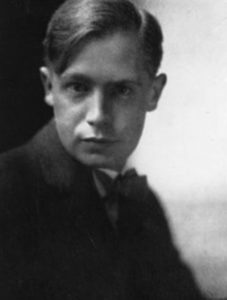
David Garnett (1892-1981). Writer and editor of T.E. Lawrence’s letters. Some of his papers found his way into the Wilson collection.
Added to this, the collection’s lucky dip occasionally threw up various papers once belonging to David “Bunny” Garnett (1892-1981), member of the Bloomsbury group, friend of T.E. Lawrence and editor of his letters, which had no clear origin but had perhaps arrived in the collection together. As I developed a familiarity with the collection, all these people became characters in the story, as well as both Lawrence’s and Wilson’s many correspondents – and I could begin to identify documents instantly because of the handwriting, choice of typeface or even because of the paper quality!
7) Watch and Listen
Wilson’s research spans the period between the 1960s to the 2010s, and thus reflects rapid changes in technology during the 20th century. There are manuscripts, typescripts, early photocopies dusty with toner, Word documents, elaborate handwritten letters, faxes, emails, cassette tapes, videos and film reels, as well as outdated media such as floppy disks (some of them actually floppy!).
The A/V material includes recordings of live radio and TV programmes, and pre-broadcast copies of documentaries featuring Wilson, some of them in French and Japanese. It also includes audio of interviews with people who had known Lawrence in the R.A.F. made by Arabella Rivington, and recordings of more famous friends assembled by Malcolm Brown from the BBC Archives.
We sent Wilson’s A/V material to be digitised. It was exciting to receive the digital recordings and to listen to tapes that perhaps hadn’t been played since the 1960s, recording the voices of Lawrence’s friends for posterity.
8) How can people find what they’re looking for?
Ultimately, the aim of cataloguing is to preserve the collection for posterity and to make it accessible to researchers. My catalogue for the Wilson project is currently under construction as there are over 100 boxes of material to work through! However, the majority of the collection is now catalogued and sorted.
Some material can be catalogued as a complete series, such as Wilson’s reconstructed diaries for every year of Lawrence’s life. In the more miscellaneous boxes, each individual item in a box is identified and assigned to a section of the catalogue. Archive catalogues work from the general to the specific, and the major series of Wilson’s papers include:
Correspondence between Jeremy Wilson and hundreds of people in the Lawrence world, including a lengthy correspondence with A.W. Lawrence.
Facsimiles of photographs, manuscripts and letters by Lawrence, documents and books.
Images, Audio and Video including original images from the R.A.F., film stills from Lawrence of Arabia, digitised copies of cassettes and videos.
Lectures, Events and Exhibitions including Wilson’s work on the landmark centenary exhibition on T.E. Lawrence at the National Portrait Gallery.
Work by other writers including memoirs, scripts, reviews and newspaper clippings.
Publications including drafts and plans for the biography as well as files on unpublished works.
Research Material including Wilson’s chronological files, indexes, ephemera and bibliographical works as well as the research papers of other people.
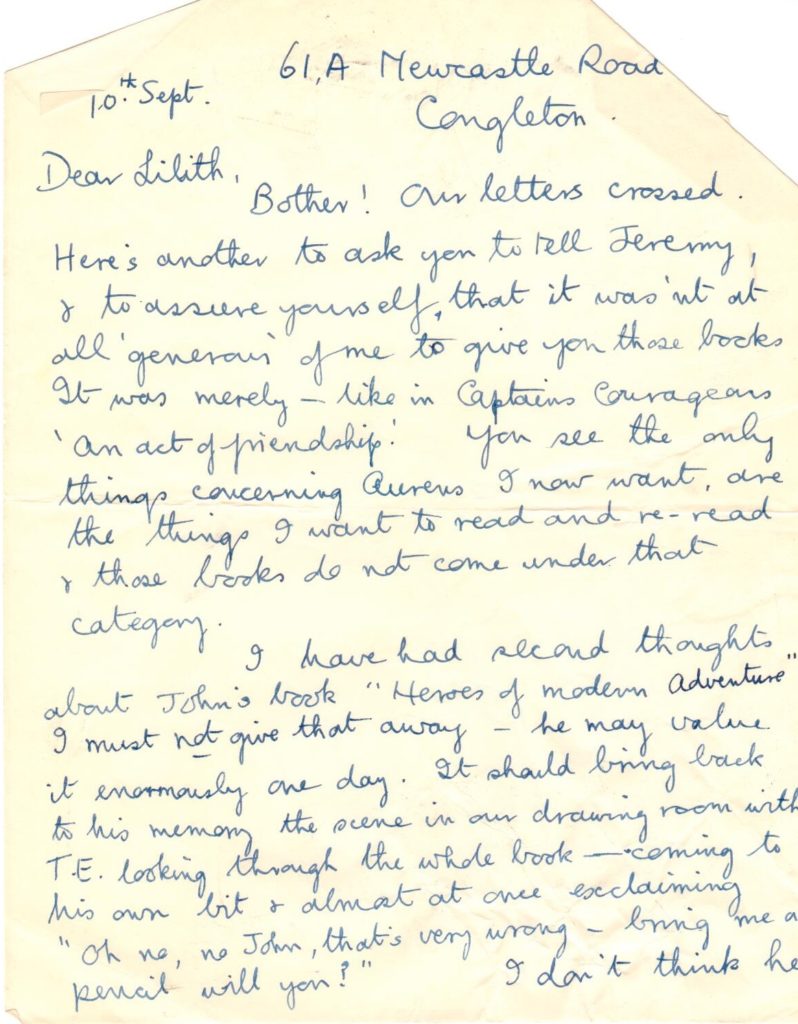

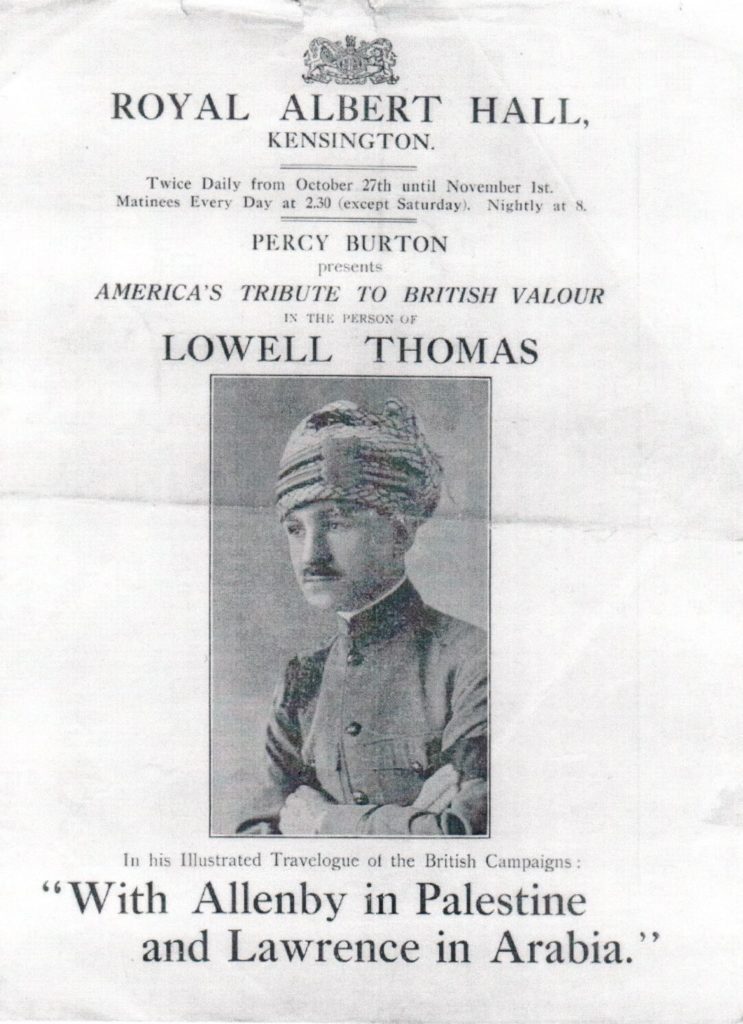
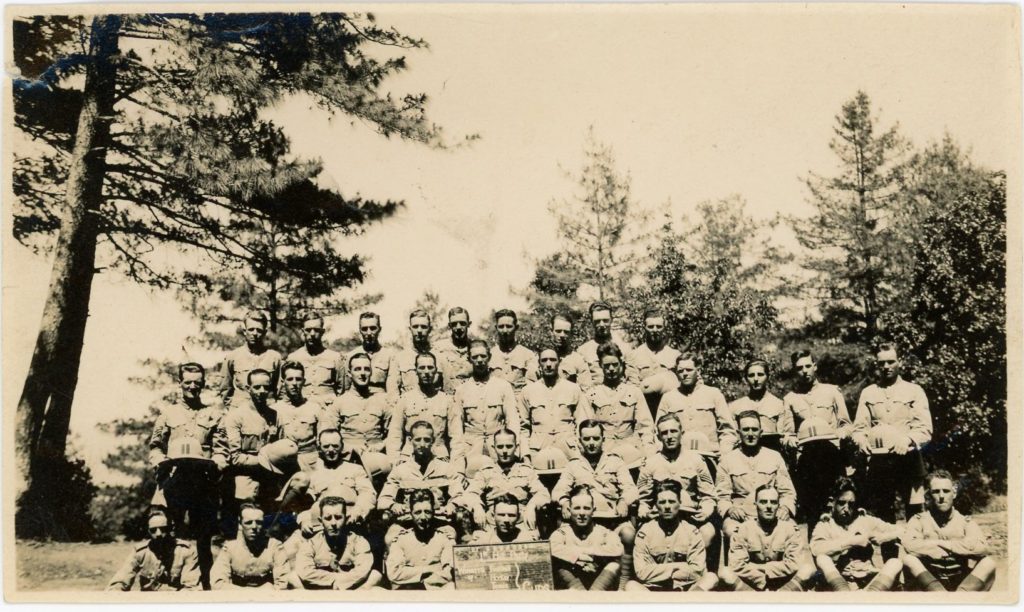
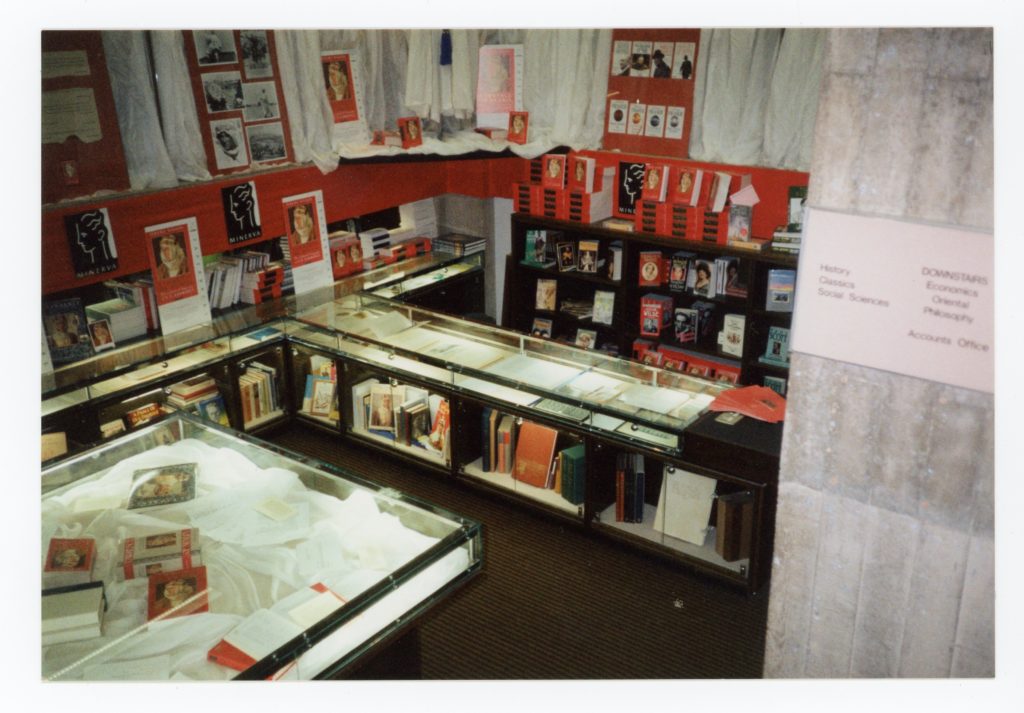

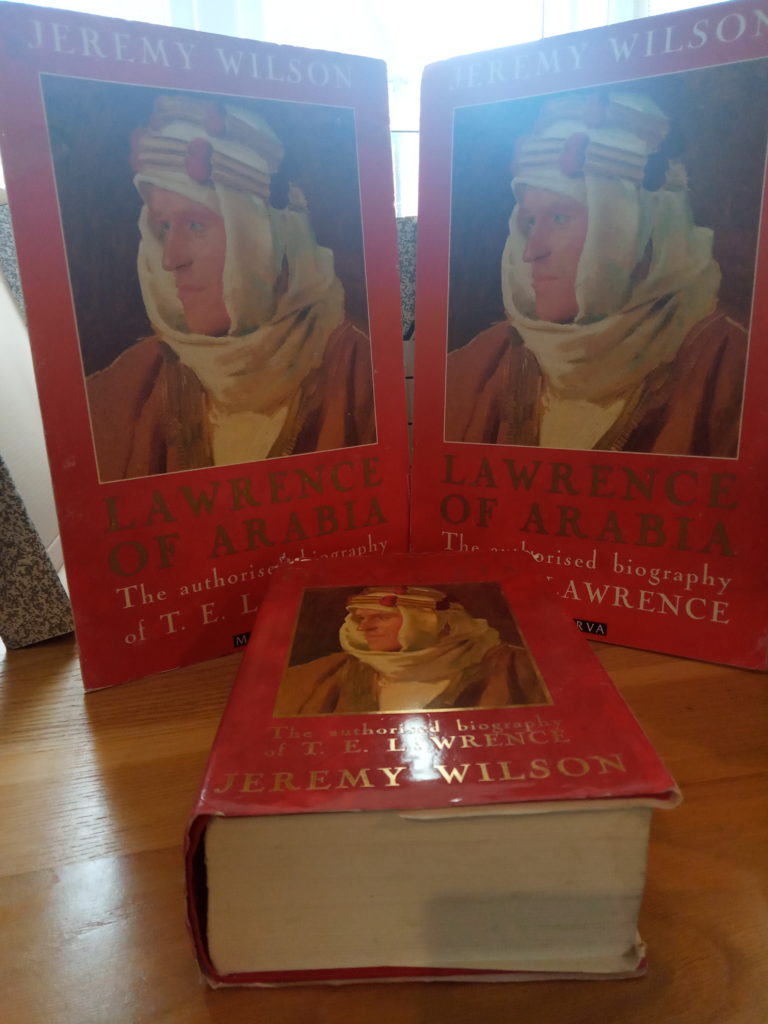

Each of these sections contains sub-categories that the researcher can use to find items that are interesting to them. As it currently stands, the draft catalogue contains over 21,000 entries for individual items! Watch this space to be able to see the catalogue when it is put online.
Access the collection
However, I’d like to emphasise that the collection is already open and researchers can still access the collection in the meantime by sending us an email at archives@magd.ox.ac.uk. If you let me know what you’re interested in, such as a person, place or event in Lawrence’s life, I can search the draft catalogue for you to find relevant material. I look forward to hearing from you!